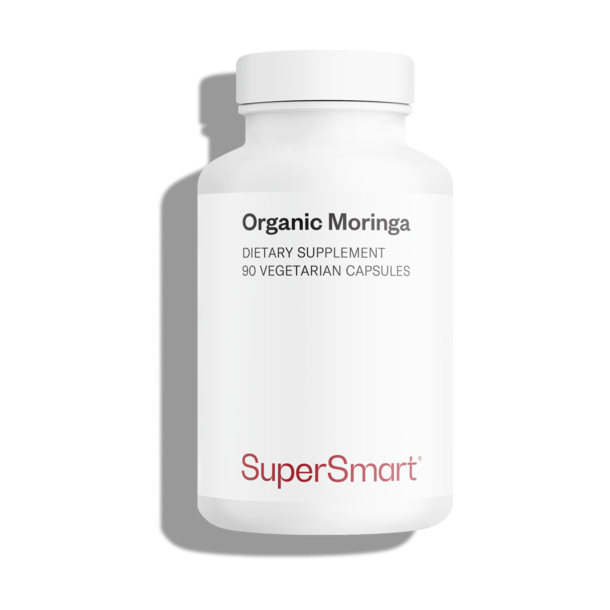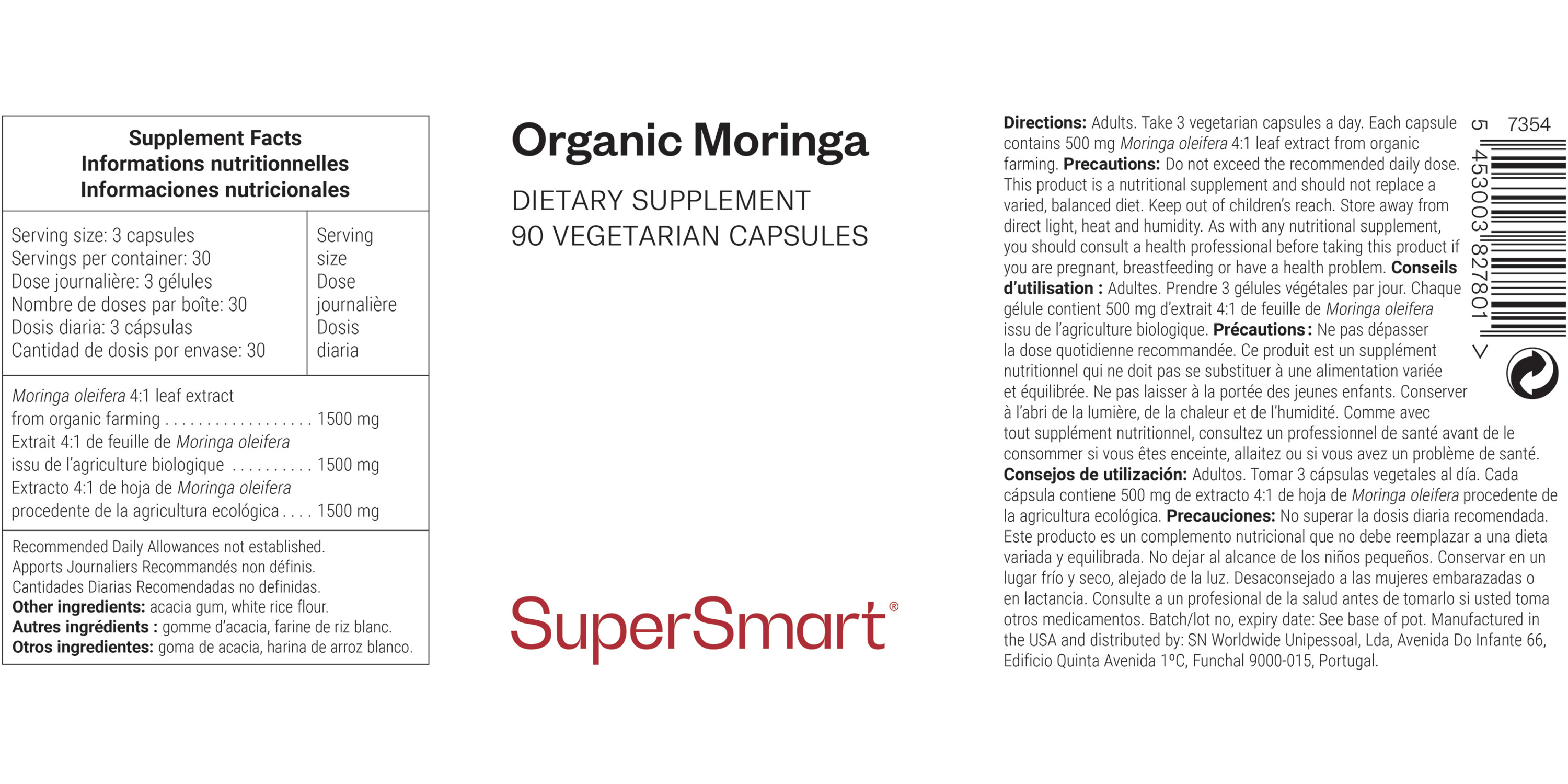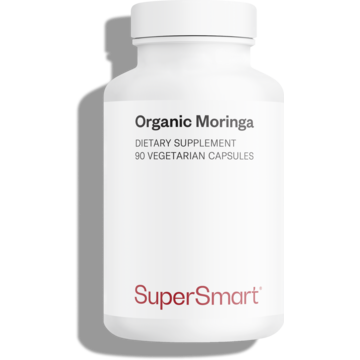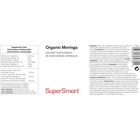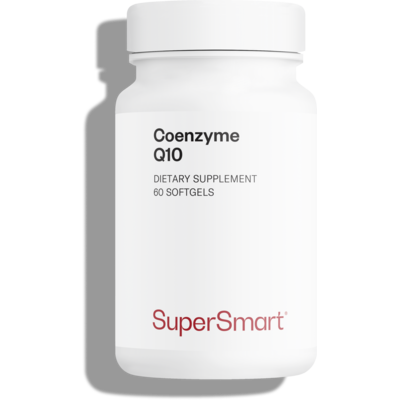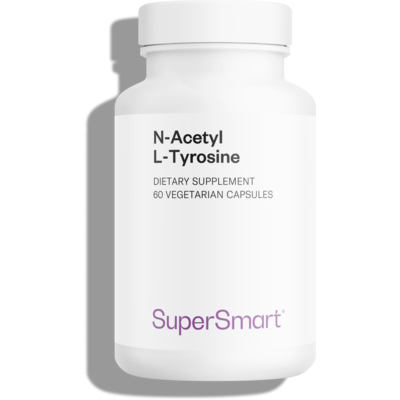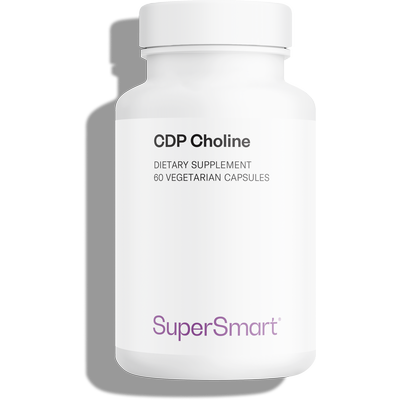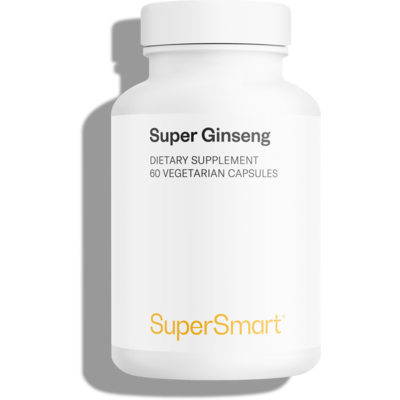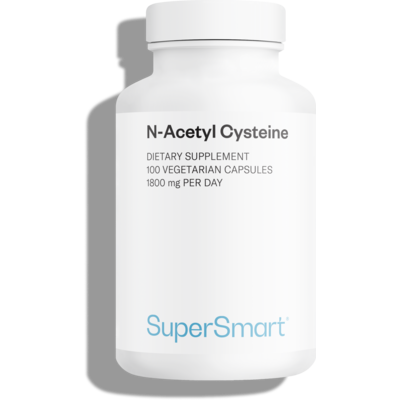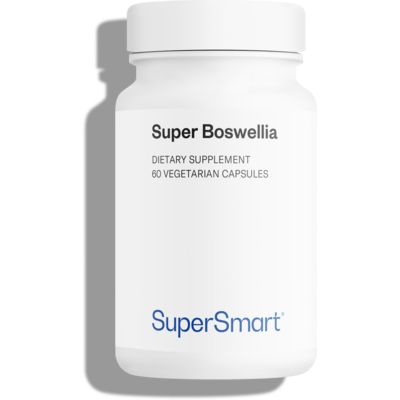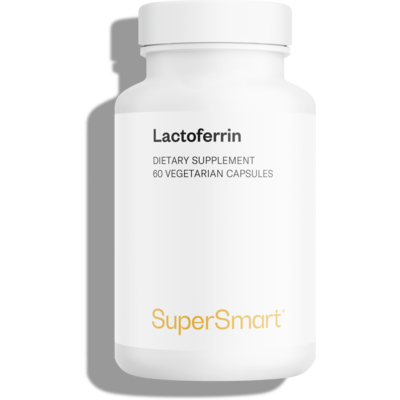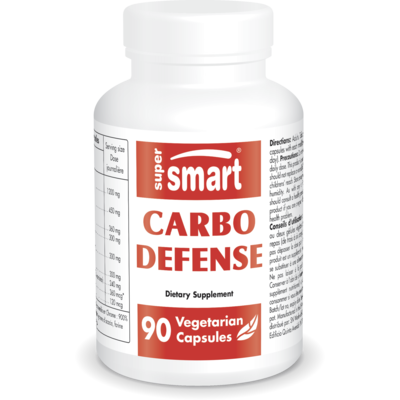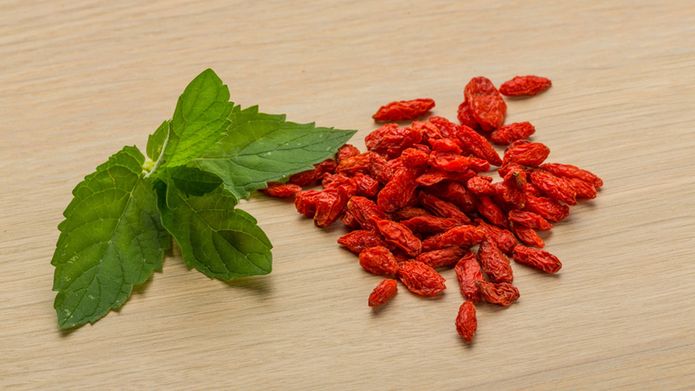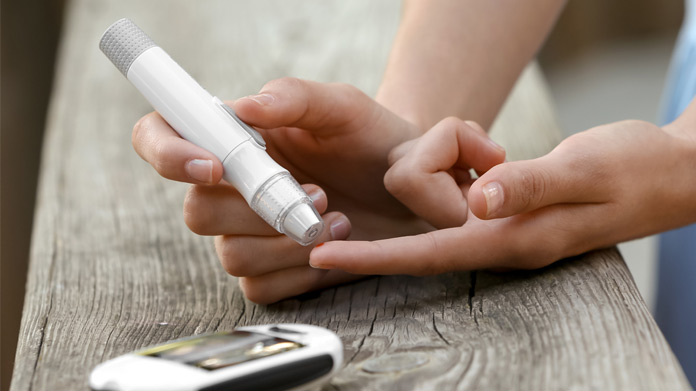Our Moringa leaf extract is a dietary supplement produced from the plant Moringa oleifera, traditionally-recognized for its exceptional nutritional value and ability to reduce levels of sugar and lipids in the blood. It’s an aqueous extract made from organically-grown Moringa leaves.
Benefits of Moringa Leaf Extract
Moringa has attracted significant interest among the scientific community. Every year, scientific studies are published highlighting the therapeutic potential of the plant’s leaves, confirming the empirical evidence that has accumulated over thousands of years.
This scientific research shows that moringa leaves offer four key benefits:
What is Moringa Oleifera Leaf Extract?
Moringa is a plant that has been recognized, used and valued for thousands of years in traditional Ayurvedic medicine. It is the only genus in the plant family Moringaceae and is grown in the world’s tropical regions and in Madagascar, primarily for the exceptional nutritional value of its leaves.
These leaves contain vitamins – particularly Vitamin C, Vitamin B6, and Vitamin B2 – and minerals – primarily iron and magnesium – and important amino acids and fatty acids, as well as precious antioxidants, including rare carotenoids, flavonoids, and phenols.
Studies have shown that moringa leaf uses include anti-inflammatory, anti-hypertensive, diuretic, antimicrobial, antioxidant, antihyperlipidemic, cardio-protective, and tissue protective properties.
What is in Moringa Oleifera Capsules?
Organic Moringa is an aqueous extract made from the plant’s leaves. It contains three major types of compound, in addition to the above-mentioned vitamins, minerals and fatty acids:
- Polyphenols, including flavonoids and phenolic acids. The principal flavonoids in moringa leaves are quercetin, rutin, chlorogenic acid, kaempferol, myricetin, and benzylamine (moringine), while the most abundant phenolic acids are salicylic, gallic, coumarinic, and caffeic acid, as well as chlorogenic acid. The latter plays a role in glucose metabolism.
- Alkaloids, in particular glucosinolates and isothiocyanates, which are primarily responsible for Moringa’s anti-inflammatory effects.
- Saponins, which combat cholesterol absorption by binding to molecules and acids in bile.
Two additional molecules, niazarin and niaziridin, present in moringa leaves, increase the biological activity of the antibiotic compounds and facilitate gastrointestinal absorption of the vitamins and other micronutrients present in the leaves.
Moringa Leaf Extract Side Effects
Consuming Moringa oleifera aqueous leaf extract can be highly beneficial as a cholesterol regulating supplement. However, before adding any new supplements to your daily regime, you need to do your research to figure out whether moringa oleifera is right for you.
Grasping all the potential moringa oleifera leaf extract side effects can enable you to make an informed decision on your health. Moringa oleifera capsules are incredibly safe for most people, but you need to tread with caution if you are taking any prescription medications regularly.
Consult your doctor to learn more about Moringa oleifera leaf extract benefits and how it may interact with any existing medications prescribed to you. While online research is important for responsible supplement usage, it’s always better to be safe than sorry.
Your doctor will be able to go through your medical history, family medical history, and your current state of health to determine whether or not moringa supplements are suitable for you. Listen to your doctor, and then make an informed decision on whether you should buy moringa leaf extract.
Finally, make sure that you tell your healthcare professional about any other supplements you are taking. The active ingredients in other supplements could interfere with Organic Moringa.
WARNINGS
Do not exceed the recommended daily dose. This product is a nutritional supplement and should not be used as a substitute for a varied and balanced diet or a healthy lifestyle.
STORAGE
Store in a cool, dry place away from direct sunlight, heat, and humidity.
Keep out of reach of children.
PREGNANCY AND MEDICAL CONDITIONS
If you are pregnant, breastfeeding, or have any medical conditions, consult your healthcare provider before using this product.
SUPPLEMENT INTERACTIONS
Consult your healthcare provider before use, especially if you are taking any medications or other supplements as there may be potential interactions.
*These statements have not been evaluated by the Food and Drug Administration. This product is not intended to diagnose, treat, cure, or prevent any disease.
Daily dose: 3 capsules
Number of doses per pack: 30 |
Amount per dose |
| Moringa oleifera 4:1 leaf extract from organic farming |
1,500 mg |
| Other ingredients: acacia gum, white rice flour.
|
Each capsule contains 500 mg of 4:1 extract of organically-grown
Moringa oleifera leaf.
How To Take Our Moringa Leaf Supplement?
To get all the moringa leaf extract benefits, we recommend adults to take 3 moringa oleifera capsules per day before meals.
It is essential only to take a moringa oleifera supplement on an empty stomach to ensure you get the best results in the shortest time possible.
Based on your results, you can adjust the serving of moringa for high cholesterol. What matters is that you listen to your body and only take the safe recommended dosage.
If you experience any side effects when consuming moringa to lower cholesterol, stop taking the supplements immediately and consult your doctor.
You may also be interested in other quality phytonutrients available to buy from our catalogue:
Note that this product should not be used as a substitute for a varied, balanced diet and a healthy lifestyle. It is important to follow the guidelines on how to take it and how much to take, and to use it by the "best before" date. It is not recommended for women who are pregnant or breastfeeding, or for children under 15. Keep out of children’s reach. Store in a cool, dry place.
- Mbikay M. 2012. Therapeutic potential of Moringa oleifera leaves in chronic hyperglycemia and dyslipidemia: a review. Front Pharmacol 3: 24. doi:10.3389/fphar.2012.00024. eCollection 2012.
- Kumari DJ. 2010. Hypoglycemic effect of Moringa oleifera and Azadirachta indica in type-2 diabetes. Bioscan 5: 211–214.
- Oh Y.S., Jun H.S. Role of bioactive food components in diabetes prevention: Effects on Beta-cell function and preservation. Nutr. Metab. Insights. 2014;7:51–59. doi: 10.4137/NMI.S13589.
- Kooltheat N., Sranujit R.P., Chumark P., Potup P., Laytragoon-Lewin N., Usuwanthim K. An ethyl acetate fraction of Moringa oleifera Lam. Inhibits human macrophage cytokine production induced by cigarette smoke. Nutrients. 2014;6:697–710. doi: 10.3390/nu6020697.
- Waterman C., Cheng D.M., Rojas-Silva P., Poulev A., Dreifus J., Lila M.A., Raskin I. Stable, water extractable isothiocyanates from Moringa oleifera leaves attenuate inflammation in vitro. Phytochemistry. 2014;103:114–122. doi: 10.1016/j.phytochem.2014.03.028.
- Ghiridhari VVA, Malhati D, Geetha K. 2011. Anti-diabetic properties of drumstick (Moringa oleifera) leaf tablets. Int J Health Nutr 2: 1–5
- Siasos G., Tousoulis D., Tsigkou V., Kokkou E., Oikonomou E., Vavuranakis M., Basdra E.K., Papavassiliou A.G., Stefanadis C. Flavonoids in atherosclerosis: An overview of their mechanisms of action. Curr. Med. Chem. 2013;20:2641–2660. doi: 10.2174/0929867311320210003.
- Toma A., Makonnen E., Debella A., Tesfaye B. Antihyperglycemic Effect on Chronic Administration of Butanol Fraction of Ethanol Extract of Moringa stenopetala Leaves in Alloxan Induced Diabetic Mice. Asian Pac. J. Trop. Biomed. 2012;2:S1606–S1610. doi: 10.1016/S2221-1691(12)60461-4.
- Niger. J. Physiol. Sci. 31 (2016): Igado and Olopade A Review on the Possible Neuroprotective Effects of Moringa Oleifera Leaf Extract
- Thurber MD, Fahey JW. 2009. Adoption of Moringa oleifera to combat under-nutrition viewed through the lens of the “differential innovations” theory. Ecol Food Nutr 48: 212–225.
- Razis AFA, Ibrahim MD, Kntayya SB. 2014. Health benefits of Moringa oleifera. Asian Pac J ... Prev 15:. DOI:10.7314/ APJCP.2014.15.20.8571.
- Moyo B, Masika PJ, Mar LJ, Hugo A, Muchenje V. 2011. Nutritional characterization of Moringa (Moringa oleifera Lam.) leaves. Afr J Biotechnol 10: 12,925–12,933.
- Teixeira EMB, Carvalho MRB, Neves VA, Silva MA, Arantes-Pereira L. 2014. Chemical characteristics and fractionation of proteins from Moringa oleifera Lam. leaves. Food Chem 147: 51–54
- Vongsak B, Sithisam P, Gritsanapan W. 2014. Simultaneous HPLC quantitative analysis of active compounds in leaves of Moringa oleifera Lam. J Chromatogr Sci 52: 641–645.
- Anwar F, Latif S, Ashraf M, Gilani AH. 2007. Moringa oleifera: a food plant with multiple medicinal uses. Phytother Res 21: 17–25
- Mbikay M. 2012. Therapeutic potential of Moringa oleifera leaves in chronic hyperglycemia and dyslipidemia: a review. Front Pharmacol 3: 24. doi:10.3389/fphar.2012.00024. eCollection 2012.
- Rao K.S., Mishra S.H. Anti-inflammatory and antihepatoxic activities of the roots of Moringa pterygosperma Gaertn. Indian J. Pharm. Sci. 1998;60:12–16.
- Faizi S., Siddiqui B., Saleem R., Aftab K., Shaheen F., Gilani A. Hypotensive constituents from the pods of Moringa oleifera. Planta Med. 1998;64:225–228. doi: 10.1055/s-2006-957414. [PubMed]
- Walter A., Samuel W., Peter A., Joseph O. Antibacterial activity of Moringa oleifera and Moringa stenopetala methanol and N-hexane seed extracts on bacteria implicated in water borne diseases. Afr. J. Microbiol. Res. 2011;5:153–157.
- Anwar F., Latif S., Ashraf M., Gilani A.H. Moringa oleifera: A food plant with multiple medicinal uses. Phytother. Res. 2007;21:17–25. doi: 10.1002/ptr.2023.
- Oyedepo T.A., Babarinde S.O., Ajayeoba T.A. Evaluation of the antihyperlipidemic effect of aqueous leaves extract of Moringa oleifera in alloxan induced diabetic rats. Int. J. Biochem. Res. Rev. 2013;3:162–170. doi: 10.9734/IJBCRR/2013/3639.
- Hamza A.A. Ameliorative effects of Moringa oleifera Lam seed extract on liver fibrosis in rats. Food Chem. Toxicol. 2010;48:345–355. doi: 10.1016/j.fct.2009.10.022. [PubMed]
- Pari L., Kumar N.A. Hepatoprotective activity of Moringa oleifera on antitubercular drug-induced liver damage in rats. J. Med. Food. 2002;5:171–177. doi: 10.1089/10966200260398206. [PubMed]
- Ayon Bhattacharya, Prashant Tiwari, Pratap K. Sahu, and Sanjay Kumar. A Review of the Phytochemical and Pharmacological Characteristics of Moringa oleifera, J Pharm Bioallied Sci. 2018 Oct-Dec; 10(4): 181–191, doi: 10.4103/JPBS.JPBS_126_18.
- Sultana B., Anwar F. Flavonols (kaempeferol, quercetin, myricetin) contents of selected fruits, vegetables and medicinal plants. Food Chem. 2008;108:879–884. doi: 10.1016/j.foodchem.2007.11.053.
- Waterman C, Cheng DM, Rojas-Silva P, et al. 2014. Stable, water extractable isothiocyanates from Moringa oleifera leaves attenuate inflammation in vitro. Phytochemistry. DOI:10.1016/ j.phytochem.2014.03.026.
- Karthikesan K., Pari L., Menon V.P. Combined treatment of tetrahydrocurcumin and chlorogenic acid exerts potential antihyperglycemic effect on streptozotocin-nicotinamide-induced diabetic rats. Gen. Physiol. Biophys. 2010;29:23–30. doi: 10.4149/gpb_2010_01_23.
- De Sotillo Rodriguez D.V., Hadley M. Chlorogenic acid modifies plasma and liver concentrations of: Cholesterol, triacylglycerol, and minerals in (fa/fa) Zucker rats. J. Nutr. Biochem. 2002;13:717–726. doi: 10.1016/S0955-2863(02)00231-0
- Oyedepo T.A., Babarinde S.O., Ajayeoba T.A. Evaluation of the antihyperlipidemic effect of aqueous leaves extract of Moringa oleifera in alloxan induced diabetic rats. Int. J. Biochem. Res. Rev. 2013;3:162–170. doi: 10.9734/IJBCRR/2013/3639.
- Shankar K, Gupta MM, Srivastava SK, et al. 2007. Determination of bioactive nitrile glycoside(s) in drumstick (Moringa oleifera) by reverse phase HPLC. Food Chem 105: 376–382.
- Stohs, S. J., & Hartman, M. J. (2015). Review of the Safety and Efficacy ofMoringa oleifera. Phytotherapy Research, 29(6), 796–804.doi:10.1002/ptr.5325

